SAM MIM-23 HAWK. Half a century in service
The first project
Work on the creation of a new anti-aircraft missile system started in 1952 year. During the first two years, United States research organizations studied the possibility of creating an air defense system with a semi-active radar guidance system and found out what technologies are necessary for the emergence of such military equipment. Already at this stage, the program to create an air defense system got its name. As a designation for the promising anti-aircraft complex, the hakron of the word Hawk (“Hawk”) - Homing All the Way Killer (“Interceptor controlled throughout the flight”) was chosen.
Preliminary work has shown the existing capabilities of the American industry and allowed to begin developing a new air defense system. In the middle of 1954, the Pentagon and several companies signed contracts to develop the various components of the HAWK complex. In accordance with them, Raytheon was to create a guided missile, and Northrop was required to develop all ground components of the complex: a launcher, radar stations, a control system and auxiliary machines.
The first test launches of the new model missiles were held in June 1956 of the year. The tests of the HAWK SAM continued for a year, after which the project developers began to correct the identified deficiencies. In the summer of 1960, the US military introduced a new anti-aircraft system under the designation MIM-23 HAWK. Soon the deliveries of serial complexes to the line units began. Later, in connection with the start of production of new modifications, the base anti-aircraft complex received an updated designation - MIM-23A.
The HAWK anti-aircraft complex included a MIM-23 guided missile, a self-propelled launcher, target detection and target radar, a radar range finder, a command post and a battery command center. In addition, the calculation of the air defense system had a number of auxiliary equipment: transport and charging machines of various models.
The aerodynamic shape of the MIM-23 rocket was formed in the early stages of work on the project and has not undergone any major changes since then. The guided missile had a length of 5,08 meters and a diameter of the hull 0,37 m. In the tail of the missile there were X-shaped wings with a span of 1,2 m with rudders across the entire width of the trailing edge. The launch mass of the missile - 584 kg, 54 kg accounted for high-explosive fragmentation warhead. The characteristics of the MIM-23A rocket equipped with a solid-fuel engine made it possible to attack targets at ranges of 2-25 km and altitudes of 50-11000 m. The probability of hitting a target with one missile was declared at the level of 50-55%.
For tracking airspace and target detection, the AN / MPQ-50 radar was incorporated into the HAWK air defense system. During one of the first upgrades, radar for detecting low-altitude targets AN / MPQ-55 was introduced into the equipment of the anti-aircraft complex. Both radar stations were equipped with antenna rotation synchronization systems. With their help, we managed to eliminate all the “dead zones” around the position of the radar station. The MIM-23A missile was equipped with a semi-active radar guidance system. For this reason, a target illumination radar was introduced into the HAWK complex. The AN / MPQ-46 illumination station could not only provide missile guidance, but also determine the range to the target. The characteristics of the radar stations made it possible to detect enemy bombers at a distance of 100 kilometers.
For the new missiles was created launcher with three guides. This system could be performed in both self-propelled and towed versions. After detecting the target and determining its coordinates, the calculation of the anti-aircraft complex had to deploy the launcher in the direction of the target and turn on the illumination locator. The homing head of a MIM-23A rocket could capture a target both before launch and in flight. Guidance of guided munitions was carried out according to the proportional approach method. When the rocket approaches the target at a given distance, the radio-fuse gave the command to undermine the high-explosive fragmentation warhead.
To deliver the missiles to the position and equipment to the launcher, the M-501-3 transport-loading machine was developed. The car on a light tracked chassis was equipped with a charging device with a hydraulic drive, which allowed to place three missiles on the launcher at the same time.
The MIM-23A HAWK anti-aircraft missile system clearly showed the possibility of creating a system of this class using semi-active radar guidance. However, the imperfection of the component base and technology affected the real capabilities of the complex. Thus, the basic version of HAWK could attack only one target at a time, which had a corresponding effect on its combat capabilities. Another serious problem was the small resource of electronics: for some modules that used vacuum tubes, the time between failures did not exceed the 40-45 hours.
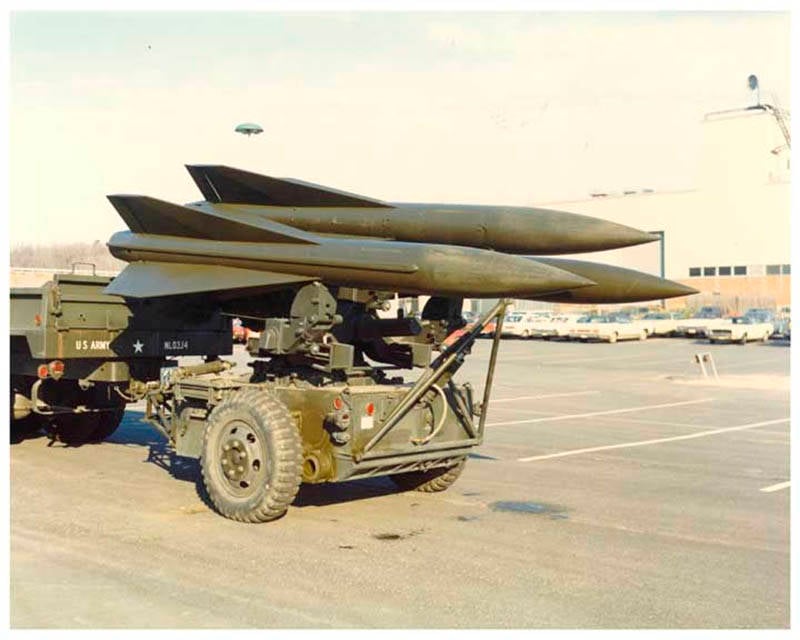
Launcher M192
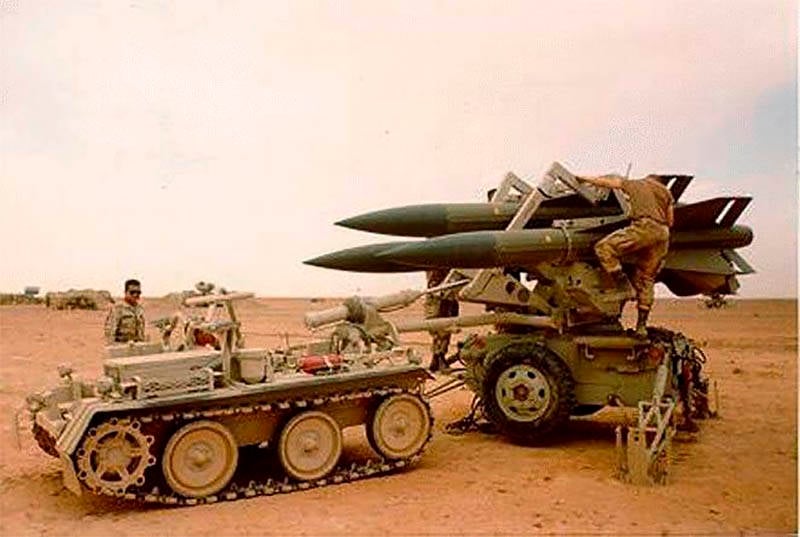
M-501EX3 transport vehicle
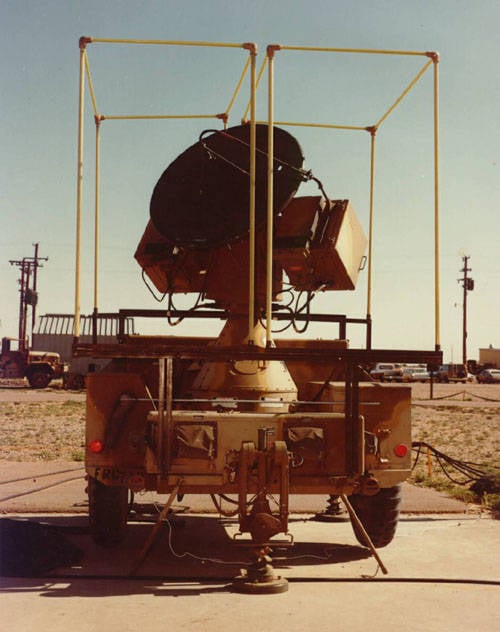
AN / MPQ-48 Targeting Radar
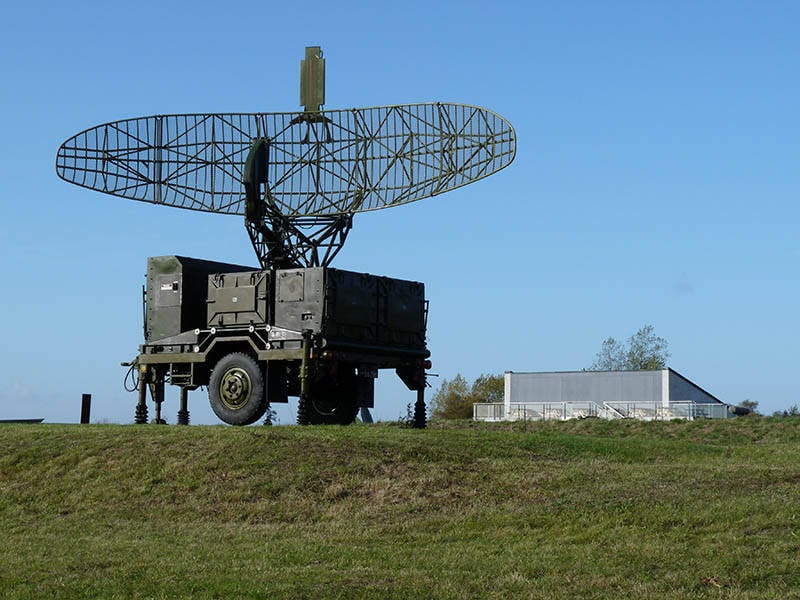
Modernization projects
The MIM-23A HAWK anti-aircraft complex significantly increased the potential of the air defense of the American troops, but the existing shortcomings called into question its further fate. It was necessary to carry out upgrades that could bring the characteristics of the systems to an acceptable level. Already in 1964, work started on the project Improved HAWK or I-HAWK ("Improved HAWK"). In the course of this modernization, it was intended to significantly improve the characteristics of the rocket, as well as update the ground components of the complex, including using digital equipment.
The basis of the upgraded air defense missile system was the rocket modification MIM-23B. She received updated electronic equipment and a new solid-fuel engine. The design of the rocket and, as a result, the dimensions remained the same, but the starting mass increased. Having burdened up to 625 kilograms, the upgraded rocket expanded its capabilities. Now the interception range ranged from 1 to 40 kilometers, height - from 30 meters to 18 km. The new solid-fuel engine provided the MIM-23B rocket with a maximum speed of up to 900 m / s.
The biggest innovation in the electronic components of the Improved HAWK SAM system was the use of a digital data processing system obtained from radar stations. In addition, the radar itself underwent significant changes. According to some data, after the improvements in the framework of the I-HAWK program, the operating time of radio-electronic systems for failure has increased to 150-170 hours.
The first anti-aircraft missile systems of the new modification entered the troops in 1972 year. The modernization program continued until 1978. The complexes built and renovated during the repairs helped to significantly increase the defense potential of the military air defense.
Shortly after the creation of the Improved HAWK project, a new program called HAWK PIP (HAWK Product Improvement Plan) was launched, which was divided into several phases. The first one was done before 1978. During the first phase of the program, the zenith complexes received upgraded AN / MPQ-55 ICWAR and IPAR target radars, which made it possible to increase the size of the monitored space.
From 1978 to the mid-eighties, HAWK system developers conducted the work of the second phase. Radar target illumination AN / MPQ-46 has been replaced by a new system AN / MPQ-57. In addition, in the ground equipment of the complex, some blocks based on lamps were replaced by transistor ones. By the mid-eighties, the optical-electronic detection and tracking station OD-179 / TVY was included in the I-HAWK air defense system. This system allowed to increase the combat capabilities of the whole complex in a difficult jamming environment.
In the 1983-89, the third phase of the modernization took place. Global changes have affected electronic equipment, most of which has been replaced by modern digital components. In addition, radar detection and target illumination stations were upgraded. An important innovation in the third phase was the LASHE (Low-Altitude Simultaneous Hawk Engagement) system, which allowed one anti-aircraft complex to simultaneously attack several targets.
After the second phase of modernization, the Improved HAWK systems were recommended to change the structure of anti-aircraft batteries. The main fire unit of the air defense missile system was a battery, which, depending on the situation, could have been two (standard battery) or three (reinforced) platoons. The standard composition implied the use of main and advanced fire platoons, reinforced - one main and two advanced ones. The battery consisted of the TSW-12 command post, MSQ-110 clearinghouse, AN / MPQ-50 radar and AN / MPQ-55 radar and AN / MPQ-51 radar. Each of the two or three main fire platoons included one AN / MPQ-57 radar, three launchers, and several auxiliary equipment. In addition to the radar light and launchers, the advanced platoon included a MSW-18 platoon command post and AN / MPQ-55 radar detection radar.
Since the early eighties, several new modifications of the MIM-23 guided missile were created. Thus, the MIM-23C rocket, which appeared in 1982, received an updated semi-active homing head, which allowed it to operate in conditions of the use of EW systems by the enemy. According to some reports, this modification appeared "thanks to" the Soviet electronic warfare systems used by the Iraqi Air Force during the war with Iran. In 1990, the MIM-23E rocket appeared, which also had greater resistance to enemy interference.
In the mid-nineties, the MIM-23K rocket was created. It differed from the previous ammunition of the family with a more powerful engine and other characteristics. The upgrade allowed to bring the firing range to 45 kilometers, the maximum altitude of the target - to 20 km. In addition, the MIM-23K rocket received a new warhead with ready-made fragments of 35 g each. For comparison, the fragments from the combat units of previous missiles weighed in 2 grams. It was argued that the upgraded warhead would allow the new guided missile to destroy tactical ballistic missiles.
Deliveries to third countries
The first HAWK anti-aircraft systems for the US military were manufactured in 1960. A year earlier, the United States, Belgium, Germany, Italy, the Netherlands and France signed an agreement to organize the joint production of new air defense systems at European enterprises. A little later, the parties to this contract received orders from Greece, Denmark and Spain, which were to receive a HAWK air defense system of European origin. Israel, Sweden and Japan, in turn, ordered the equipment directly from the United States. In the late sixties, the United States delivered the first anti-aircraft systems to South Korea and Taiwan, and also helped Japan with the organization of licensed production.
In the late seventies, European operators engaged in the modernization of their MIM-23 HAWK systems under the American project. Belgium, Germany, Greece, Denmark, Italy, the Netherlands and France carried out the refinement of the existing systems in the first and second phases of the American project. In addition, Germany and the Netherlands independently improved the existing complexes, equipping them with additional infrared means for detecting targets. The infrared camera was installed on the illumination radar, between its antennas. According to some reports, this system made it possible to detect targets at distances up to 80-100 kilometers.
The military of Denmark wanted to get complexes that were improved in another way. Optical-electronic means of detecting and tracking targets were installed on the Danish air defense system HAWK. The complex included two television cameras designed for target detection at distances up to 40 and up to 20 kilometers. According to some sources, after such a modernization, Danish anti-aircraft gunners were able to monitor the situation using only optical-electronic systems and to turn on the radar only after approaching the target to the distance necessary for an effective attack.
MIM-23 HAWK anti-aircraft missile systems were shipped to 25 countries in Europe, the Middle East, Asia and Africa. In total, several hundred sets of air defense missiles and about 40 thousand missiles of several modifications were manufactured. A large part of the countries of operators have so far abandoned HAWK systems due to their obsolescence. For example, the last US Marine Corps in the American armed forces finally stopped using all the systems of the MIM-23 family at the beginning of the two thousandth.
Nevertheless, some countries continue to operate the HAWK SAM systems of various modifications and so far do not plan to abandon them. For example, a few days ago it became known that Egypt and Jordan, still using the HAWK complexes of later modifications, want to extend the life of existing missiles. For this, Egypt intends to order from the United States 186 solid fuel engines for MIM-23 rockets, and Jordan - 114. The total value of the two contracts will be approximately 12,6 million US dollars. The delivery of new rocket engines will allow customer countries to continue to operate the HAWK anti-aircraft systems over the next few years.
Of great interest is the fate of HAWK complexes supplied to Iran. For several decades, the Iranian military has exploited a number of systems in this family. According to some data, after the break with the US, Iranian experts independently conducted several upgrades of the existing air defense system using the available element base. In addition, at the end of the last decade, a Mersad complex with several types of missiles was created, representing a deep modernization of the American system. Exact information about this Iranian development is missing. According to some sources, Iranian designers managed to increase the firing range to 60 kilometers.
Combat application
Despite the fact that the MIM-23 HAWK was developed in the United States to arm its own army, the American forces did not have to use it to destroy enemy aircraft or helicopters. For this reason, the first aircraft shot down by a MIM-23 rocket was recorded at the expense of the Israeli anti-aircraft gunners. 5 June 1967, Israel’s air defense attacked its own Dassault MD.450 Ouragan fighter. The damaged car could have fallen on the territory of the Nuclear Research Center in Dimona, because of which the air defense units had to use missiles against it.
In the course of the following armed conflicts, the calculations of the Israeli HAWK air defense system destroyed several dozen enemy aircraft. For example, during the Doomsday War 75 used missiles were able to destroy at least 12 aircraft.
During the Iran-Iraq war, Iran’s anti-aircraft gunners were able to destroy the order of Iraqi 40 aircraft. In addition, several Iranian vehicles were hit by friendly fire.
During the same armed conflict, Kuwait’s air defense system opened its combat account. Kuwaiti HAWK complexes destroyed one Iranian F-5 fighter that invaded the country's airspace. In August, the 1990 of the year, during the Iraqi invasion of Kuwait, the anti-aircraft gunners of the latter shot down 14 of enemy aircraft, but lost several HAWK SAM batteries.
In 1987, the French armed forces supported Chad during the conflict with Libya. 7 September the calculation of the French SAM MIM-23 performed a successful launch of a missile on the Libyan bomber Tu-22.
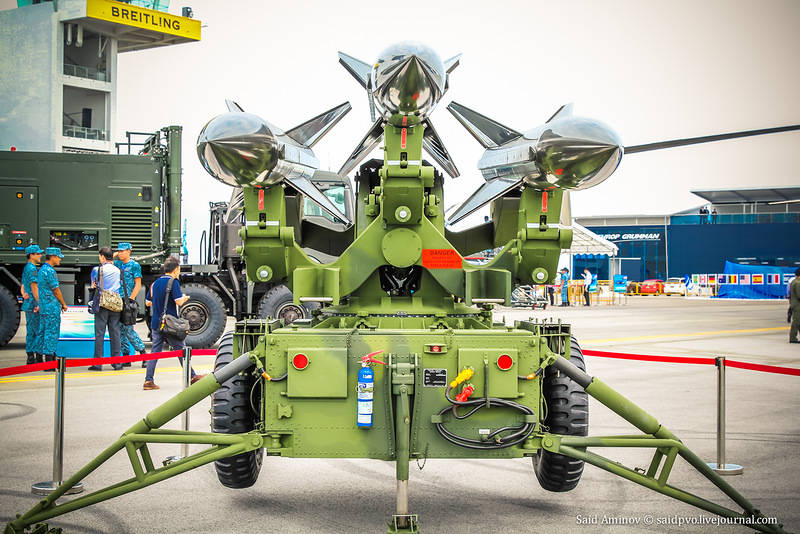
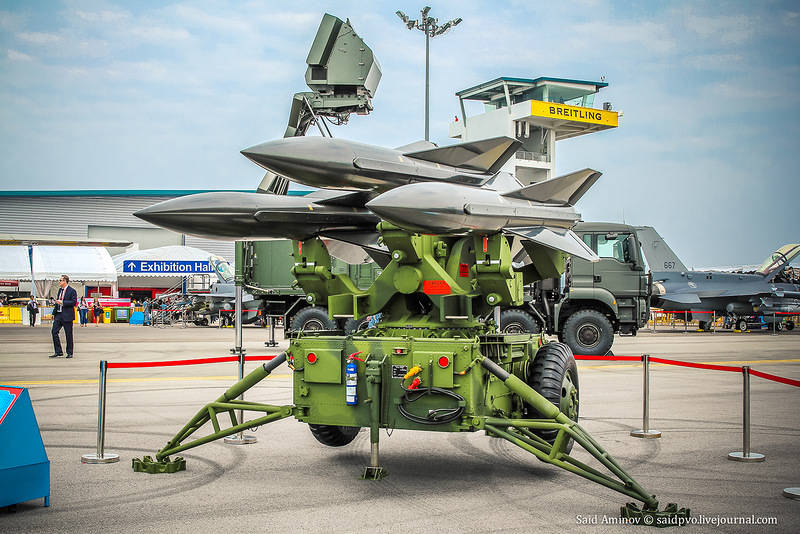
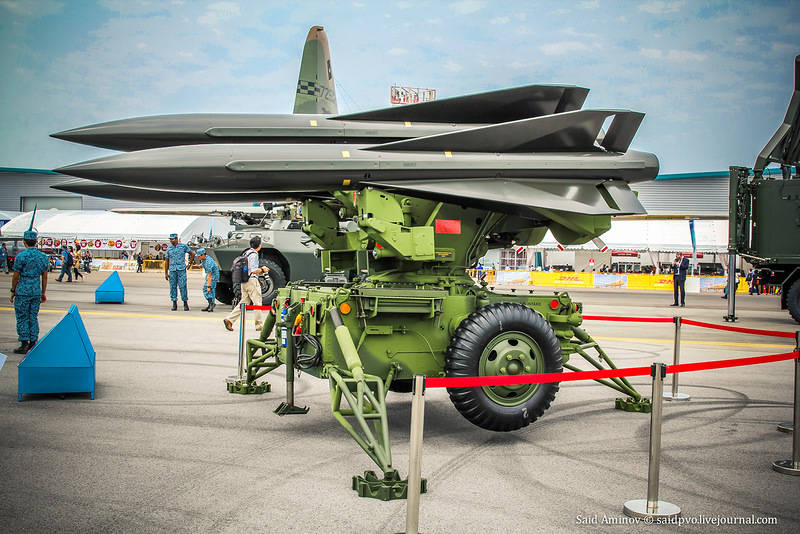
RK "Advanced Hawk" can hit supersonic air targets at distances from 1 to 40 km and altitudes of 0,03 - 18 km (maximum values of the range and height of destruction of the Hok air defense missile system are respectively 30 and 12 km) and can fire at adverse weather conditions and interference
***
The summer will be 54 of the year since the adoption of the HAWK air defense system into service with the American army. For anti-aircraft systems, this age is unique. Nevertheless, despite several upgrades, the US still stopped operating the MIM-23 complexes at the beginning of the last decade. Following the United States, several European countries have decommissioned these systems. Time takes its toll, and even the most recent modifications of the anti-aircraft complex do not fully meet modern requirements.
At the same time, however, most countries that once purchased the MIM-23 air defense system continue to operate it. Moreover, some states even intend to modernize and extend the resource, like Egypt or Jordan. Do not forget about Iran, which used the American development as the basis for its own project.
All these facts can serve as evidence that the MIM-23 HAWK anti-aircraft missile system proved to be one of the most successful systems of its class. Many countries have chosen this particular air defense system and continue to operate it to this day. Nevertheless, despite all its merits, HAWK SAM system is outdated and needs to be replaced. Many developed countries have long since written off obsolete equipment and put on duty new anti-aircraft systems with higher performance. Apparently, a similar fate soon awaits HAWK anti-aircraft complexes, protecting the sky of other states.
Based on:
http://rbase.new-factoria.ru/
http://pvo.guns.ru/
http://designation-systems.net/
http://lenta.ru/
Vasilin N.Ya., Gurinovich A.L. Anti-aircraft missile systems. - Minsk: Popurri LLC, 2002
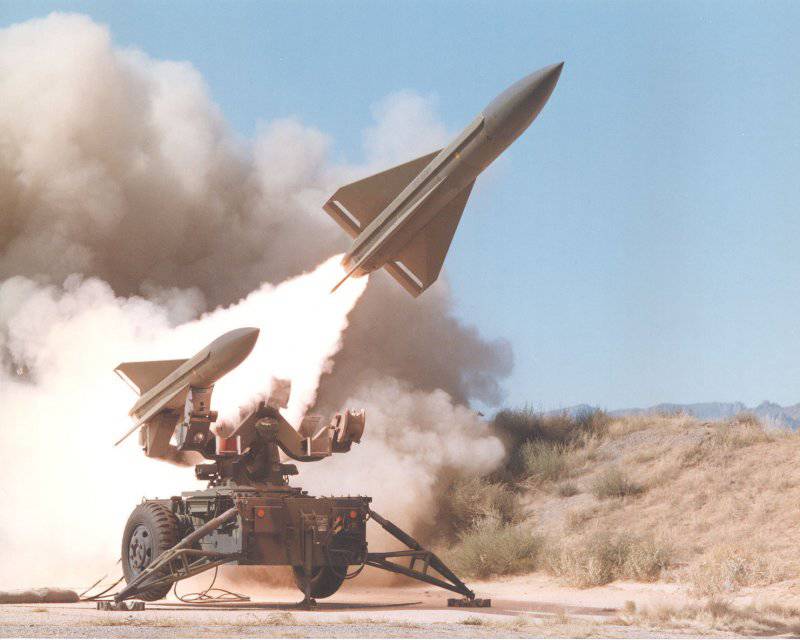
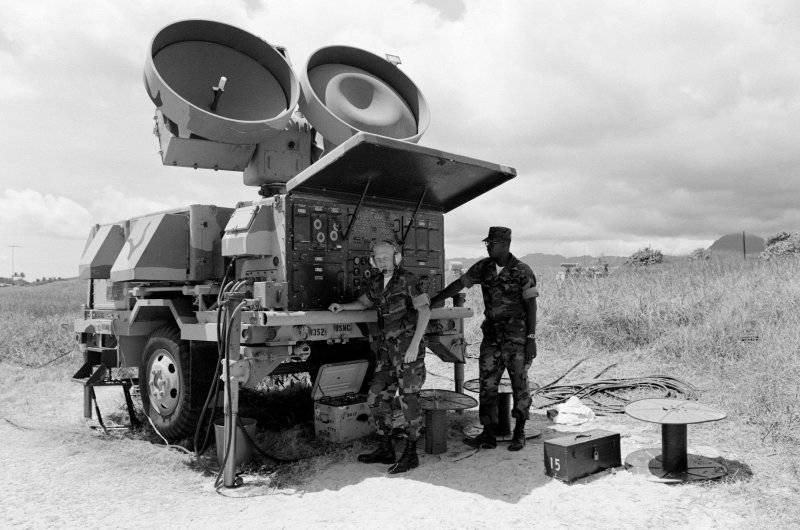
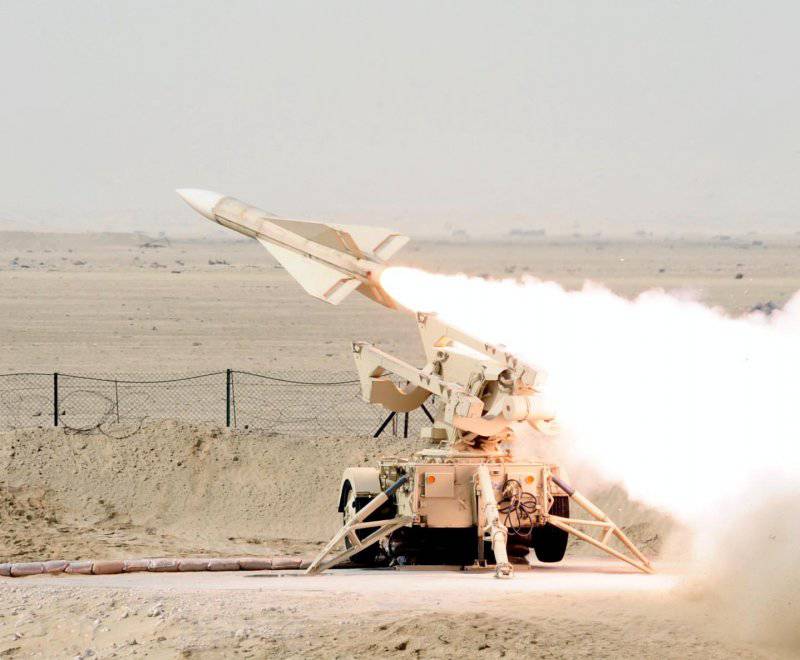
Information